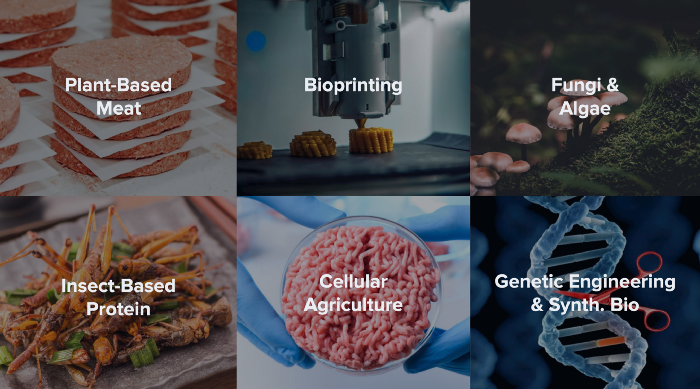Cricket Protein Vs Beef in Terms of Water Needs
How Insects Could Completely Change the Manner We Arroyo Poly peptide
Published June 23, 2020 | Updated October iv, 2021 |

When I was in the first grade, I had a friend, who we'll call Timmy.
Timmy was aninterestingcharacter, and he had this need to actually effort and stand out. However, he did then not by playing sports, or by doing well in schoolhouse, but by eating random materials he found around our schoolhouse.
Everyone knew Timmy had this reputation, and as first-graders, we didn't actually care what he ate or where it came from.
Yet, that all changed ane fateful solar day in bound, when rather than trying to swallow a pencil, he ate a potato bug (a pill bug). From this one incident, his reputation every bit a normal beginning-grader was absolutely tarnished. All the kids where absolutely disgusted by the idea of consuming bugs.
We see that culture interpret towards us today.We don't eat bugs.It sounds similar something that one of your super outdoorsy friends would practice.
But, what if we did? What if eating bugs as a source of protein was the norm?
Slowly, nosotros're seeing this mindset shift towards a future where rather than eating meat, we consume insect-based products. Even so, nosotros still have a long way to go, and a lot of cognitive dissonance to tackle.
🥩 What'due south Wrong With Our Modern Forms of Meat?
Correct at present, conventional meat productionsucks.Information technology raises a bunch of concerns concerning it'due south ecological impact, it's long-term sustainability, wellness benefits and the way that we actually excerpt meat.
To dig the knife in, here are some statistics that highlight simply how bad the meat product crunch is:
- 2400 gallons of water are required to produce justone poundof meat. That's the equivalent of drinking 38 400 cups of water 🤯.
- Livestock product accounts for 70% of all agronomical land employ, occupying 30% of the Earth's land surface.
- xviii% of the greenhouse gases on Earth are existence produced equally a result of the cultivation of lifestock.
- Globally, we waste the meat of 12 billion animals every year, with more that half of that meat being usable.
- It's been estimated that swapping some of the beef we eat for beans, peas and mycoprotein (derived from fungi) could reduce mortality by 5–7%.
- Within the last 50 years, the amount humans living on Earth has doubled, however, the amount of meat we consume has tripled. This raises concerns with overproduction, specially in the western world.

Greenhouse gas emissions per calorie for a variety of agricultural goods. Note that here, meat overpowers every other source in terms of its gge output, with beef emitting 4x higher than chicken or pork.
… And I could go on.
To summarize: The longer we continue to produce meat, the bigger and more pregnant our climate impact becomes.
There'due south clearly a problem with our meat. However, the agriculture industrypowersour earth, peculiarly in developing countries. Information technology doesn't make sense to abandon information technology. This would mean abandoning the one billion+ people involved in agronomical-related piece of work around the globe, making up iii% of the earth's GDP.
This means that nosotros can't completely eliminate the production of meat. But is there another option?
👋 Say Hello to Your New Best Friend: Alternative Protein
We've known about the affect meat product has had for years. There accept been summits, UN declarations, and protests, merely,no matter what we do, information technology'due south unrealistic to assume that all of us will e'er willingly stop eating meat forever.
Nosotros can't but tell people: "don't eat meat" and take everyone actually follow through.
So, how can nosotros get rid of meat's impact without actually getting rid of meat?
For a while, we've been trying to change the food we produce by introducing things like rennet, preservatives, and insulin. Nonetheless, inside the last 20 years, the field ofCulling Proteinshas grown exponentially.
In a nutshell, Alternative Proteins Involve:
Using diverse emerging technologies and synthetic biology to design and manufacture alternatives to the tissues, fats, and proteins that conventional agriculture produces.
This isn't just one specific product. There are a variety of subsections and different areas ranging from something as 'futuristic' as growing meat from a test tube and 3D printing food, to something as 'elementary' every bit converting all meat to establish-based products.
All of these innovations are exciting, merely, let's take a look into something that'southward already existence used equally protein across the world,insect-based foods.
🦗 Insects Are Gross. Why Should we Even Consider Eating Them?
If you've ever seen a issues in your room, yous've probably lunged to kill information technology, become rid of it, or screamed. Your automatic instinct was definitely not to swallow it as a light snack.
* At present, when we fix insects every bit a source of protein, it's not as if we're actually just plucking them from the air and eating them raw (although this is an option), simply, more on that in a bit.
When you really dig deep into the world of consuming insects for food, you find that it literallydoesn't make sense non to exist eating them.They accept virtually accept everything we demand nutritionally need to survive and thrive.
There are a variety of bugs that are beneficial to eat, ranging from grasshoppers to mealworms to beetles.
For the sake of evaluating the nutritional value, let's take a expect at crickets, since they're pretty popular in the insect-based foods infinite.All bugs volition vary in terms of the benefits they provide.
For a 100 grams of crickets…
- You'll getthreescore g of poly peptide. In comparison, an identical serving of craven volition give you 31 g, and stale beefiness volition give you 41 grams.
- You'll go your dosage ofall nine essential amino acids, which are needed for things similar the building of proteins and synthesis of hormones and neurotransmitters. This makes crickets the perfect source of culling protein.
- You'll obtain a large amount of the omega acids, including theOmega-3s and Omega-6s.
- Y'all'll receive extremely high levels of vitamin B12. Depending on how it'south produced, 100g of crickets tin can requite you upward to1,587.half dozen% of your daily minimum intake.
- You'll receive a pregnant corporeality of vitamins, minerals, and other key nutrients.
- 80% of a cricket is digestible. The next best competitor, the chicken, is only 50% digestible and offers way less nutritional value.
We see positive trends with other bugs as well. Mealworms, for case, are an amazing source of fibre.
Information technology'due south condom to say that the nutritional value of insects is pretty darn great, but, what's fifty-fifty MORE impressive is how sustainable their product is, particularly when compared to conventional farming.
🚜 Farming in a Way You've Never 'Herd' of Earlier
There'due south no question every bit to whether farming cattle or farming insects is more sustainable.The reply here is articulate.
If we want to intake our necessary amounts of (live-species based) protein while minimizing our ecological touch on, nosotros demand to be eating and producing insects.
Let's use crickets as an instance again:

Water Required for the Cultivation of Beef: The Tillage of Crickets
In gild to produceone pound of crickets, nosotros merely need0.45 gallons of water. Beefiness literally requires 2400x that corporeality. Insects can become fully hydrated from the food they're consuming, and thus, require much less water.

Full land required for beefiness compared to land required for crickets. You can larn more than about the specific land requirements for cattle here.
Cultivating insects likewise uses much less country than traditional farming. Whereas the product of a unmarried pound beef requires around 200 m² of land, crickets just require 15 m², a notable difference.
Cows and similar animals require a lot of land considering their feed comes from pastures. However, crickets, considering of their smaller size and nutritional requirements, they have up significantly less space.

Total Feed Required for Cattle:Insects
Finally, crickets apply much less feed than other sources of protein. For one pound of crickets, just 2.1 pounds of feed. Initially, this might sound large, however, cows require 25 pounds of feed for i pound of beef.
Other insects have similar environmental benefits as well.
🐛 Why Aren't We Already Eating Bugs?
Well, that question is a bit clickbait-y. We actually are eating bugs, just not in the Western world and a skilful majority of Europe.
Back in the day, a couple hundred years ago, individuals living in Europe were living in cold climates, which means they had to get their protein from actual mammals. When they travelled to the Americas and saw Ethnic individuals consuming bugs, information technology was labelled as 'primitive', even though insect-foods are extremely nutritious.
Effectually Asia, Africa, and Latin America, eating bugs is seen equally normal. A household in Kinshasa, Congo, eats effectually 300g of caterpillars a week.
However, just because other people eat insects, doesn't hateful that That there are admittedly no concerns in the world of entomophagy. The biggest concern currently is solely the fact that consuming bugs simply seems icky, however, there are a couple other issues that should be considered as well:
- Just as with other sources of nutrition, insects do have the potential to trigger allergic reactions.
- Wild insects feed on decaying substances, which can contain harmful bacteria. If they're properly prepared, this shouldn't be a problem.
- There's non much information out at that place regarding the use of pesticides when raising insects. If we want to mass-produce protein this manner, nosotros demand to look further into this.
- The exoskeletons of insects have been plant to have small amounts of 'anti-nutrients' (things similar tannins and lectins). However, compared to found-based foods, these levels are relatively low.
- For individuals obtaining insects from the wild, they have the risk of consuming toxins. Since certain animals require toxins to ward off predators, non knowing how to properly handle these things can terminate up harming someone.
Annotation: These 'cons' are low-chance. We also meet the aforementioned problems come upwards concerning meat and grain.
Although Timmy was pretty much shunned within the community of first-graders, maybe he was onto something.
It literally doesn't make sense for us non to be eating bugs.
Nosotros've grown up surrounded by the idea that bugs are absolutely disgusting, and accept had information technology repeated towards us as we've aged. Just, times are changing.
We're noticing the problems that come up with our traditional approaches to nutrient, and forcing modify to occur.
Simply mayhap, insect-based foods are going to completely revolutionize the way nosotros approach protein. They're a tried and true source. They're great. And they are the hereafter.
🔑 Key Takeaways
- Right now, conventional meat production brings upwardly a diversity of health and environmental concerns. Eating insect-based proteins provides an socially and ecologically beneficial alternative.
- Insects are the perfect source of alternative protein, loftier in poly peptide content itself, containing all the essential amino acids, and a plethora of other vitamins and minerals.
- The process of cultivating insects is significantly better for the surroundings than traditional protein production. It'due south more than feed, water, and land efficient.
- Around the world, a multifariousness of communities regularly eat insects.
- There are certain concerns regarding the product of insects for poly peptide, however, like concerns also nowadays when because the production of plants and meat.
👋Hey! If you liked my article and would similar to read more of my work, feel gratis to follow me onMedium! I'grand as well always thankful to hear feedback so, if you would like to get in contact with me (I don't seize with teeth, shoot me a message!), connect with me onLinkedIn!
To stay upwardly to appointment on New Harvest research updates and events, sign upwards for our newsletter.
Related
Virtually the Authors
Source: https://new-harvest.org/insects-change-protein/

0 Response to "Cricket Protein Vs Beef in Terms of Water Needs"
إرسال تعليق